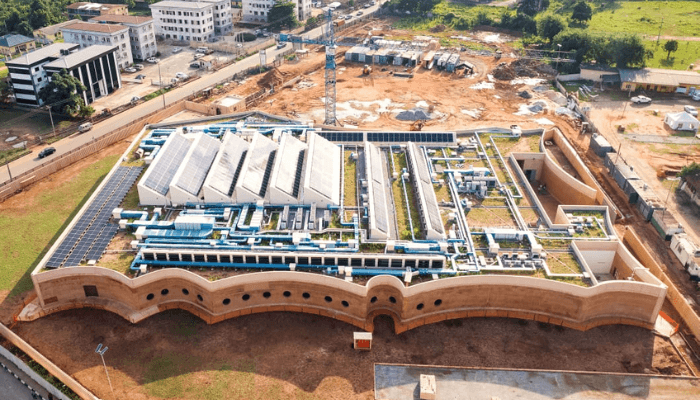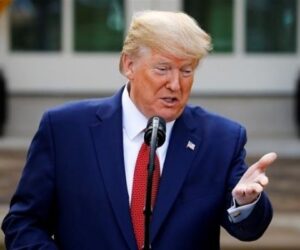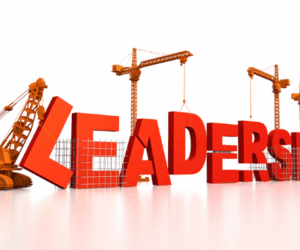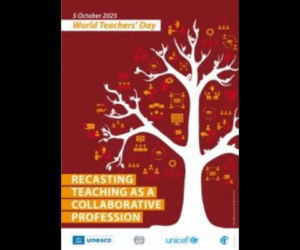There has been a buzz in the press and social media lately about the Museum of West African Art, which was supposed to have an opening exhibition on the 11th of November, 2025.
For the record, there has been a National Museum in Benin since 1973. It is managed by the National Commission for Museums and Monuments. It contains some bronze, wooden and terracotta artefacts pertaining to Benin culture and history. Some of the bronzes returned from Europe so far in the restitution drive are on display in an ongoing public exhibition at that museum.
A restitution agreement crafted in 2022 between Nigeria and European and American museums that should see the imminent return of many of Benin’s looted treasures.
According to a law signed by former President Buhari, Oba Ewuare II, Oba of Benin is the custodian of the artefacts.
When the plan for a Museum of West African Art was mooted in 2019, many Arts enthusiasts in Nigeria were excited by the thought that this visionary, world class project would be an appropriate sanctuary and display platform for the Benin Bronzes, which are, perhaps, the most emotive and visible evidence of the colonial despoilation of Africa. The sight of African art stolen from the continent brazenly on display in public and private museums in Europe and America, including the British Museum, is a psychological burden regularly endured by Africans in the modern day. One argument used by people who insist that stolen objects such as the Elgin Marbles stolen from Greece, cannot be returned to the original owners, is that they ‘belong to the world’. Another argument is that ‘Africans cannot take care of the precious objects’ due to the continent’s poverty and the low quality of display, maintenance and access in its few museums.
The name ‘Benin Bronzes’ describes thousands of metal plaques, sculptures, portraits and jewellery in various materials, made by Benin artisans, that decorated the palace of the King of Benin. They were stolen by British soldiers when they conquered the Benin Kingdom in 1897.
The Museum of West African Art (MOWAA), located in Benin city, was founded as an independent, non-profit body for the preservation of the culture and heritage of West Africa. It is a $25 million project, collating private capital and donations from sponsors, including governments and organisations from Nigeria and some other countries. The design, spread over seven acres of land, is the artistic creation of a celebrated Ghanaian architect of the diaspora, and is intentionally focussed on building a creative connection between the past and the present.
MOWAA’s formal introduction to the world was to be marked by an exhibition tagged ‘Nigeria Imaginary Homecoming’ – featuring some Nigerian artists such as Modupeola Fadugba, Isaac Emokpae, Kelani Abass, Ngozi-Omeje and other artistes, including Tunji Adeniyi-Jones, in a remake of a presentation first made at the Venice Arts Beinnale. Behind the scenes, some young Nigerians, such as Ore Disu, have poured their souls into the project day and night to bring this once-in-a-lifetime dream to reality.
It is now public knowledge that the ‘launching’ did not take place on the proposed date, and that emotions are running rife in some quarters.
There was even a public announcement that the C of O of the land on which the museum is built had been revoked.
Personal and political differences between the Edo State leadership at the project’s inception and the present leadership are among obstacles waiting to be smoothed over. There is the matter of how ‘Edo’ was part of the project’s original name but is missing from the present name.
Meanwhile, it has been affirmed by all stakeholders that ownership and authority over the Benin Bronzes pertains to the Royal Palace and not to MOWAA.
MOWAA was set up to research, to do archaeological digs, to seek and exchange knowledge in different ways, and to foster and exhibit past, present and future creativity, as shown in its oeuvre, titled ‘Nigeria Imaginary’. Nothing stops a world-class museum from ‘borrowing’ items of special interest such as Benin Bronzes from the owners for occasional exhibitions, as is the practice all over the world.
Among all the problems on the ground, none is insoluble.
Incidentally, there is a group of African Americans named the Restitution Study Group who are claiming joint ownership of the Benin Bronzes with the Benin Kingdom. For several years, they have been agitating against the repatriation of the stolen treasures to Nigeria. The group is led by Deadria Farmer-Paellmann. Her argument is that the bronzes are ‘blood money’, made from ingots traded by Portuguese slavers for their ancestors, who were sold into slavery in the Americas by the Bini. It is not true, but it has not stopped the point of view gaining traction with some African Americans, generating hostility to ‘home-based’ Africans. The group has filed lawsuits against the Smithsonian Institute to stop it repatriating its Bronzes. They have gone all the way to the US Supreme Court. They have lost every time. Some Nigerians experts including Prof Duro Oni of UNILAG have interacted with Farmer-Paellmann and tried to persuade her to see the fallacy of her historical position. They have found her mistaken conviction to be unshakeable. On the group’s website, there is celebration over the current imbroglio around MOWAA and the Bronzes.
Nigerians need to put their best foot forward to ensure the unhindered homecoming of the Benin Bronzes to their ancestral home in the Edo Royal palace, and its environs. They also need to ensure that the Museum of West African Art (MOWAA) in Benin City is nurtured into a major source of creative economy for Edo State, a universally recognised showpiece behemoth for African creativity, and a knowledge factory that Nigerians at home and in the diaspora – present and future, may visit, embrace, and proudly claim for their own.









